Abstract
The objectives of this study were to test the hypothesis in awake dogs that during control conditions endocardial vessels are maximally dilated and to determine whether variables introduced by general anesthesia and thoracotomy modify distribution of myocardial blood flow or impair capacity for augmentation of flow in response to a coronary vasodilator stimulus. Myocardial blood flow was measured in relatively small, 2-3 g, left ventricular epicardial and endocardial samples by using 7-10-μm radioisotope-labeled microspheres during control conditions and during infusion of adenosine in dosages which produced maximum increases in coronary blood flow. Measurements were made initially in awake resting animals and were repeated after pentobarbital anesthesia, thoracotomy, and pericardiotomy.
Blood flow (mean±SEM) in the epicardium and endocardium, respectively, was 0.75±0.06 and 0.83±0.06 during control conditions and 4.98±0.28 and 4.49±0.27 cm3/min/g during adenosine. These data demonstrate considerable capacity for vasodilation in both myocardial layers and thus refute the hypothesis that endocardial vessels are maximally dilated during control conditions. During control conditions blood flow within epicardial and endocardial layers was essentially homogeneous around the circumference of the left ventricle. In contrast to previous studies in anesthetized animals, however, transmural gradients were present in most regions, i.e., endocardium: epicardium ratio (endo/epi) 1.06-1.16. During adenosine, circumferential epicardial flows were homogeneous; however, circumferential endocardial flows were inhomogeneous and increased less than epicardial flows, endo/epi 0.81-0.99.
Anesthesia, thoracotomy, and pericardiotomy increased epicardial and endocardial flow, mean values 1.08±0.10 and 1.11±0.08 cm3/min/g, respectively. Transmural gradients remained in only papillary muscle regions. Adenosine increased epicardial flow comparably before and after anesthesia. Although adenosine increased endocardial flow three- to fourfold after anesthesia, the increase was considerably less than epicardial flow, i.e., endo/epi 0.63-0.78.
Full text
PDF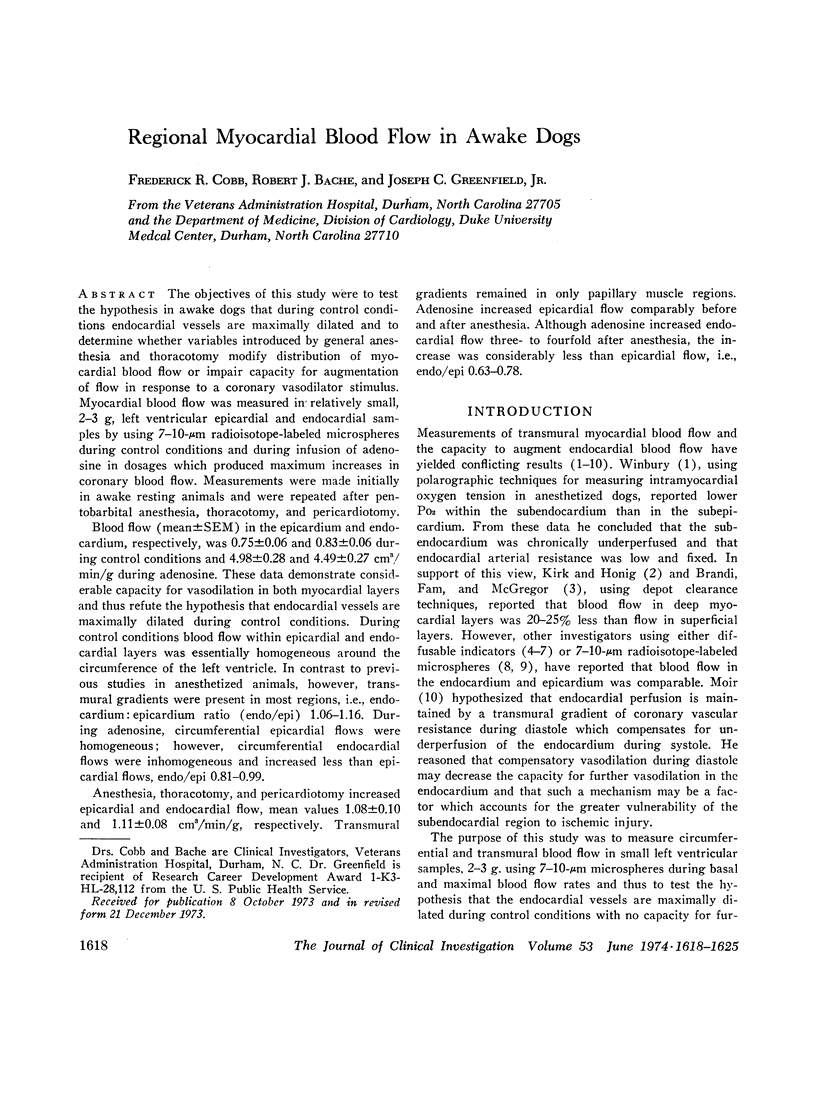
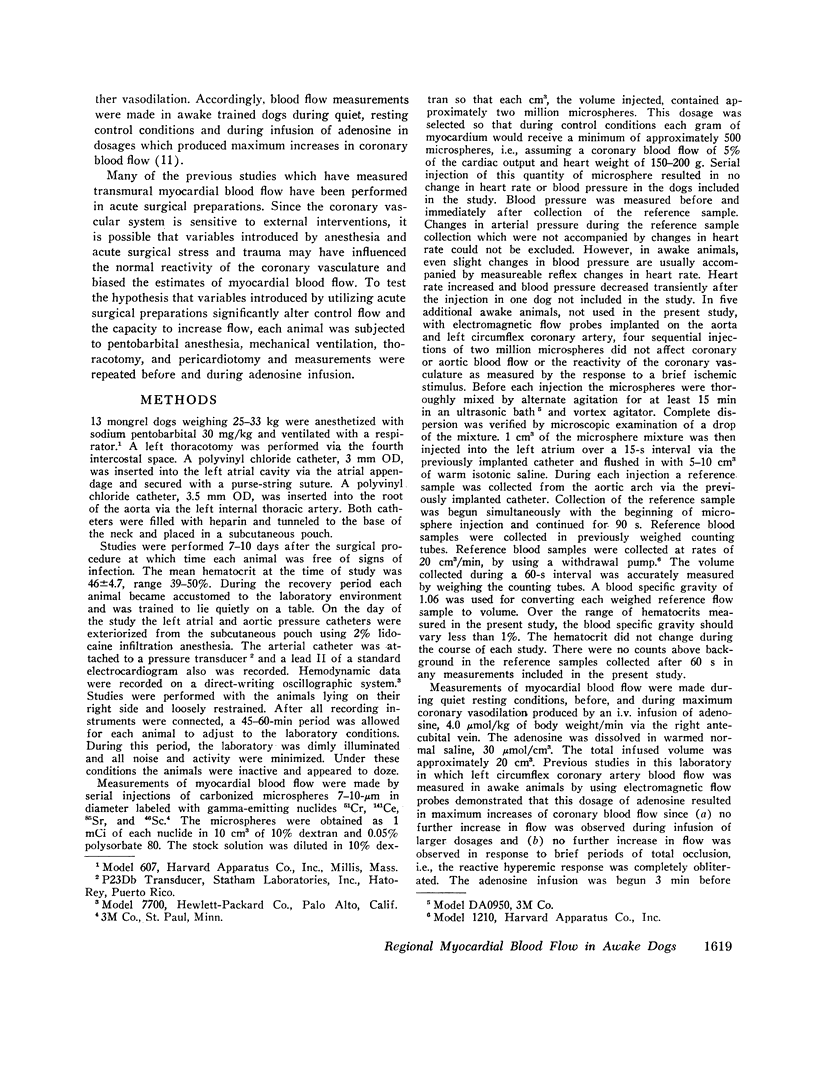
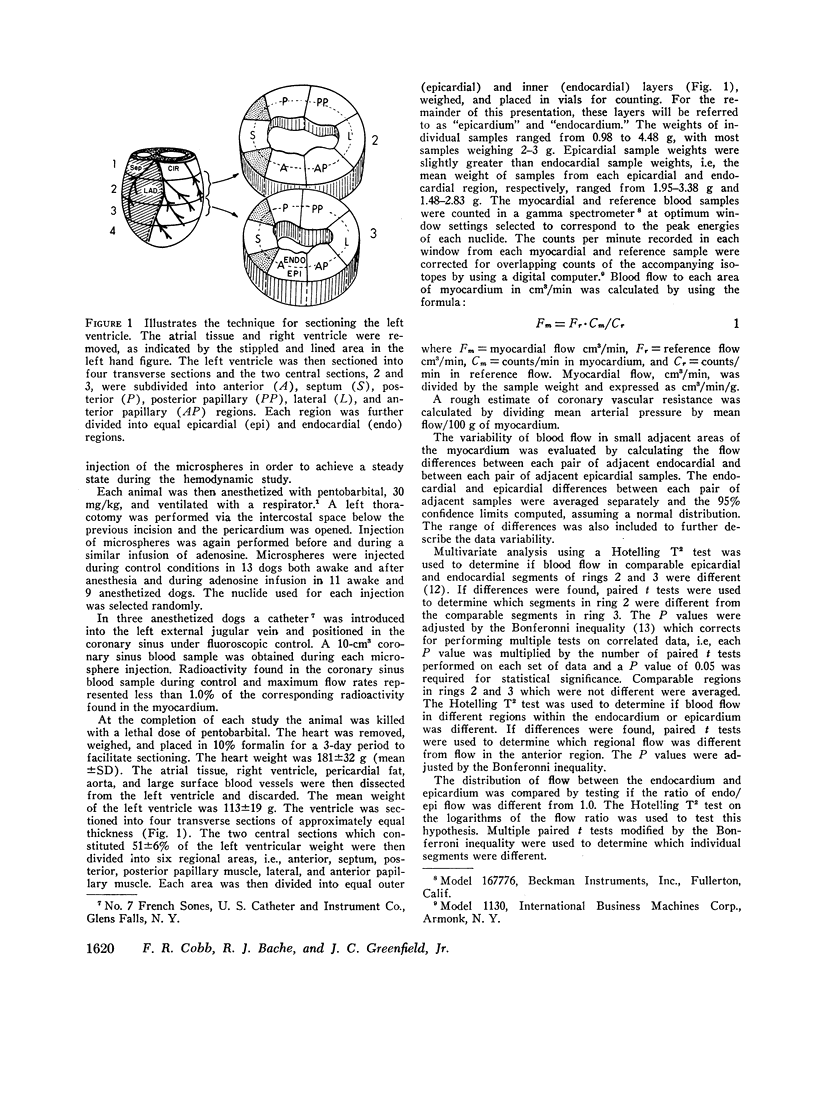
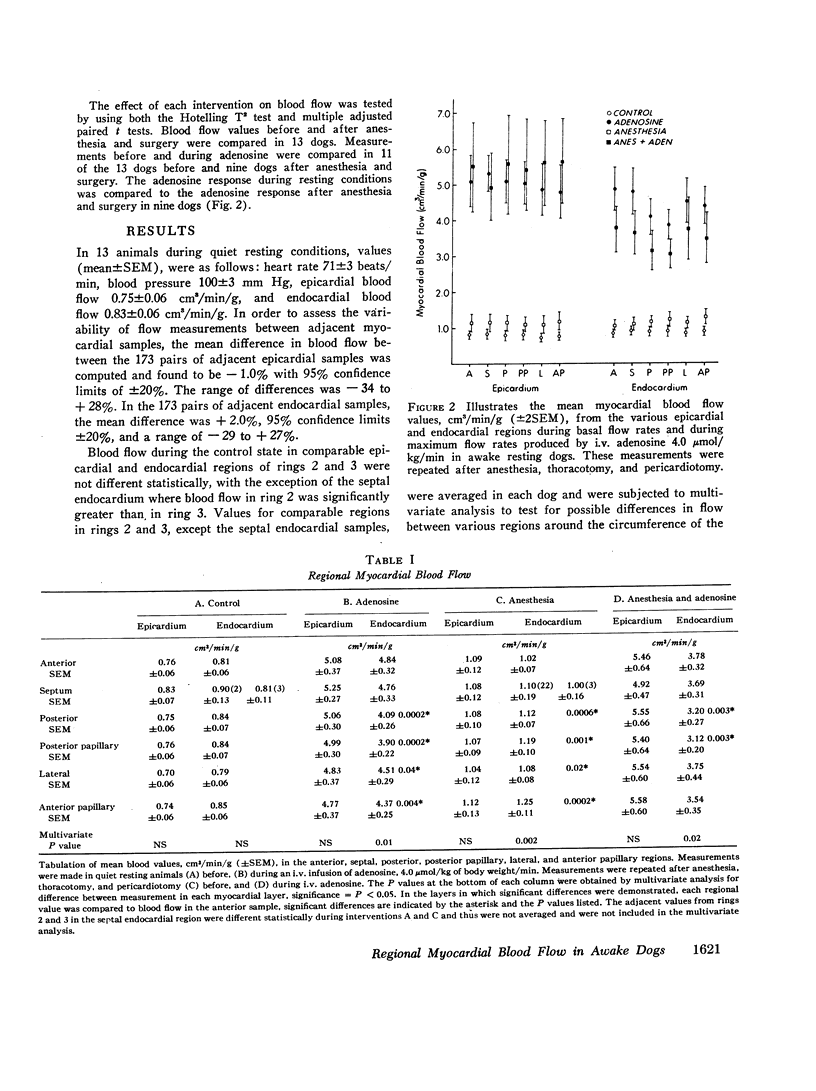
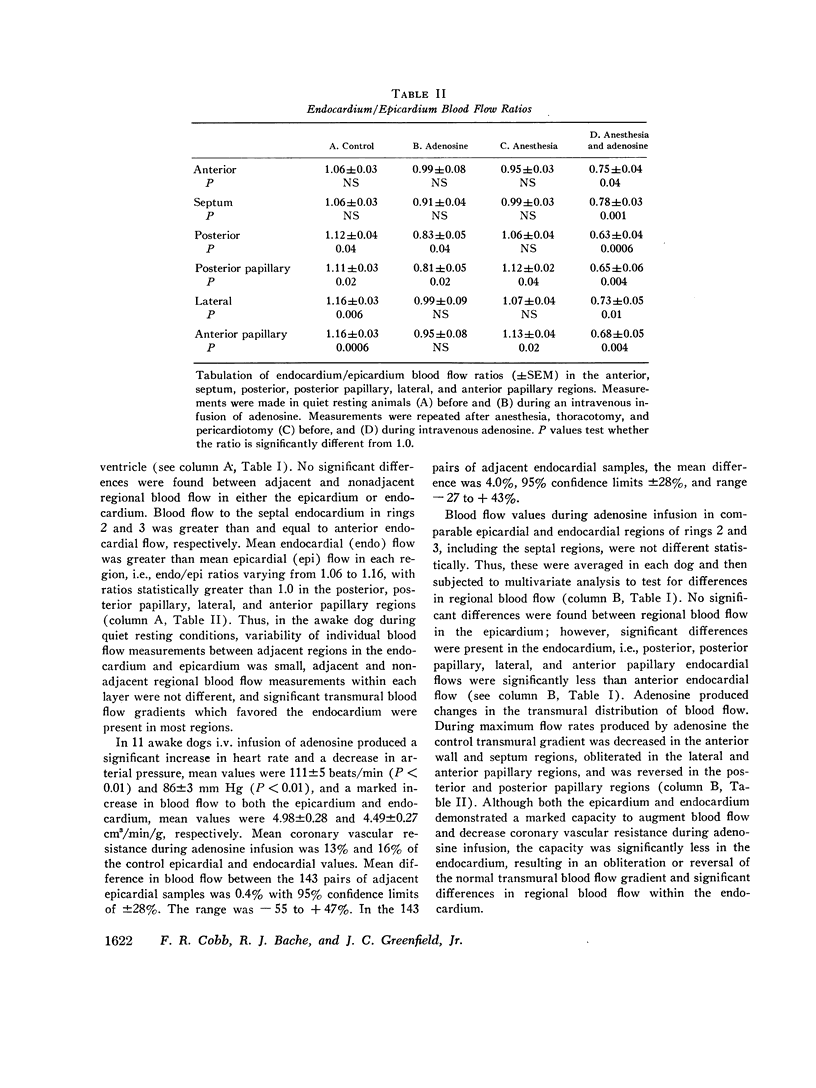
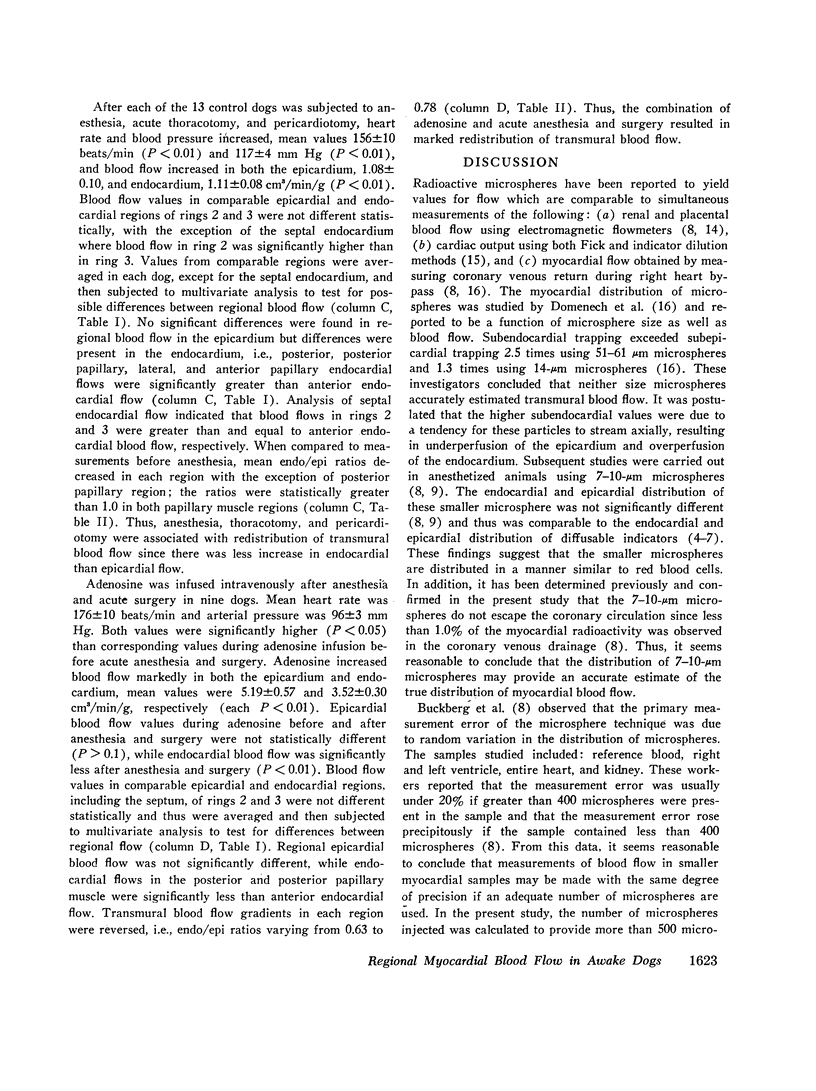
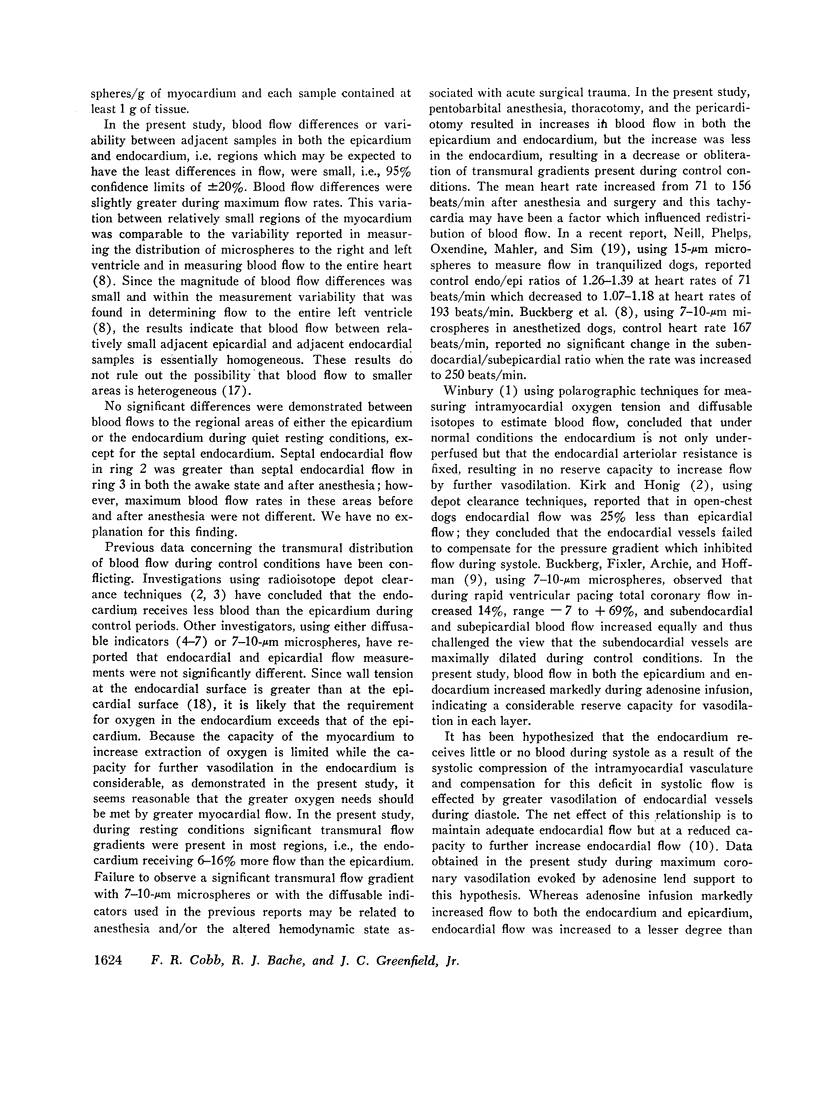
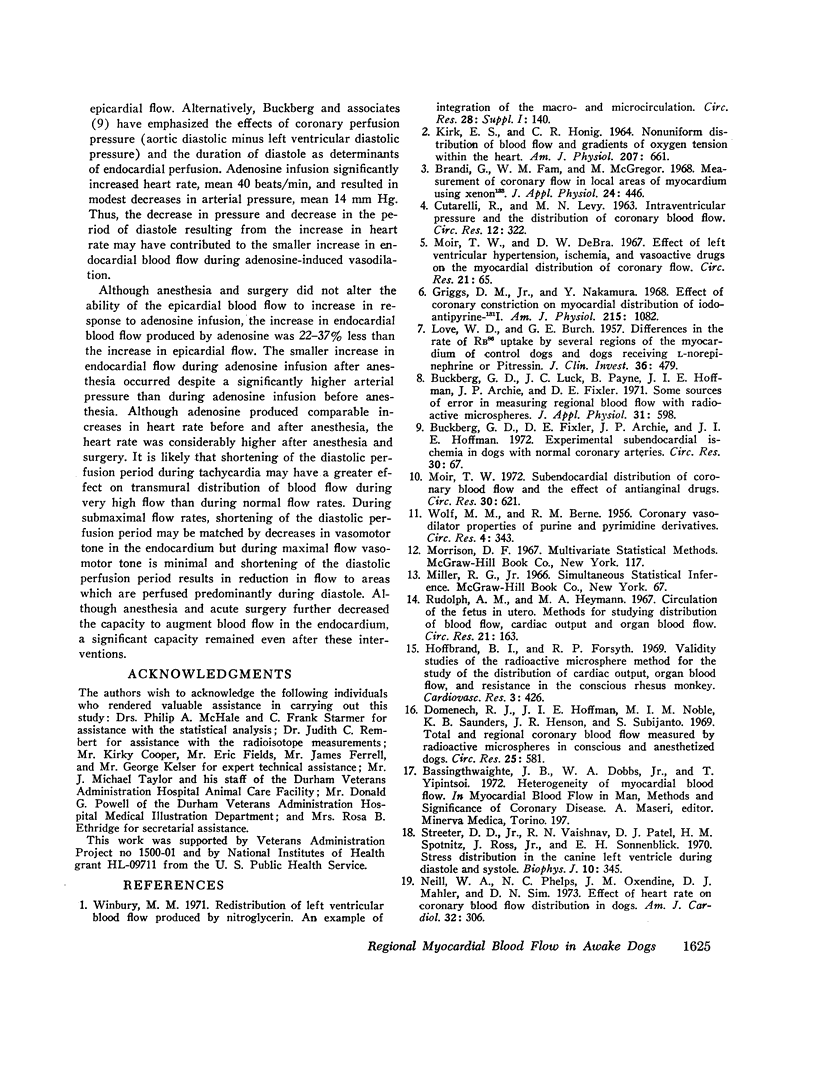
Selected References
These references are in PubMed. This may not be the complete list of references from this article.
- Brandi G., Fam W. M., McGregor M. Measurement of coronary flow in local areas of myocardium using xenon 133. J Appl Physiol. 1968 Mar;24(3):446–450. doi: 10.1152/jappl.1968.24.3.446. [DOI] [PubMed] [Google Scholar]
- Buckberg G. D., Fixler D. E., Archie J. P., Hoffman J. I. Experimental subendocardial ischemia in dogs with normal coronary arteries. Circ Res. 1972 Jan;30(1):67–81. doi: 10.1161/01.res.30.1.67. [DOI] [PubMed] [Google Scholar]
- Buckberg G. D., Luck J. C., Payne D. B., Hoffman J. I., Archie J. P., Fixler D. E. Some sources of error in measuring regional blood flow with radioactive microspheres. J Appl Physiol. 1971 Oct;31(4):598–604. doi: 10.1152/jappl.1971.31.4.598. [DOI] [PubMed] [Google Scholar]
- CUTARELLI R., LEVY M. N. Intraventricular pressure and the distribution of coronary blood flow. Circ Res. 1963 Mar;12:322–327. doi: 10.1161/01.res.12.3.322. [DOI] [PubMed] [Google Scholar]
- Domenech R. J., Hoffman J. I., Noble M. I., Saunders K. B., Henson J. R., Subijanto S. Total and regional coronary blood flow measured by radioactive microspheres in conscious and anesthetized dogs. Circ Res. 1969 Nov;25(5):581–596. doi: 10.1161/01.res.25.5.581. [DOI] [PubMed] [Google Scholar]
- Griggs D. M., Jr, Nakamura Y. Effect of coronary constriction on myocardial distribution of iodoantipyrine-131-I. Am J Physiol. 1968 Nov;215(5):1082–1086. doi: 10.1152/ajplegacy.1968.215.5.1082. [DOI] [PubMed] [Google Scholar]
- Hoffbrand B. I., Forsyth R. P. Validity studies of the radioactive microsphere method for the study of the distribution of cardiac output, orn blood flow, and resistance in the conscious rhesus monkey. Cardiovasc Res. 1969 Oct;3(4):426–432. doi: 10.1093/cvr/3.4.426. [DOI] [PubMed] [Google Scholar]
- KIRK E. S., HONIG C. R. NONUNIFORM DISTRIBUTION OF BLOOD FLOW AND GRADIENTS OF OXYGEN TENSION WITHIN THE HEART. Am J Physiol. 1964 Sep;207:661–668. doi: 10.1152/ajplegacy.1964.207.3.661. [DOI] [PubMed] [Google Scholar]
- LOVE W. D., BURCH G. E. Differences in the rate of Rb86 uptake by several regions of the myocardium of control dogs and dogs receiving 1-norepinephrine or pitressin. J Clin Invest. 1957 Mar;36(3):479–484. doi: 10.1172/JCI103445. [DOI] [PMC free article] [PubMed] [Google Scholar]
- Moir T. W., DeBra D. W. Effect of left ventricular hypertension, ischemia and vasoactive drugs on the myocardial distribution of coronary flow. Circ Res. 1967 Jul;21(1):65–74. doi: 10.1161/01.res.21.1.65. [DOI] [PubMed] [Google Scholar]
- Moir T. W. Subendocardial distribution of coronary blood flow and the effect of antianginal drugs. Circ Res. 1972 Jun;30(6):621–627. doi: 10.1161/01.res.30.6.621. [DOI] [PubMed] [Google Scholar]
- Neill W. A., Phelps N. C., Oxendine J. M., Mahler D. J., Sim D. N. Effect of heart rate on coronary blood flow distribution in dogs. Am J Cardiol. 1973 Sep 7;32(3):306–312. doi: 10.1016/s0002-9149(73)80138-9. [DOI] [PubMed] [Google Scholar]
- Rudolph A. M., Heymann M. A. The circulation of the fetus in utero. Methods for studying distribution of blood flow, cardiac output and organ blood flow. Circ Res. 1967 Aug;21(2):163–184. doi: 10.1161/01.res.21.2.163. [DOI] [PubMed] [Google Scholar]
- Streeter D. D., Jr, Vaishnav R. N., Patel D. J., Spotnitz H. M., Ross J., Jr, Sonnenblick E. H. Stress distribution in the canine left ventricle during diastole and systole. Biophys J. 1970 Apr;10(4):345–363. doi: 10.1016/S0006-3495(70)86306-8. [DOI] [PMC free article] [PubMed] [Google Scholar]
- WOLF M. M., BERNE R. M. Coronary vasodilator properties of purine and pyrimidine derivatives. Circ Res. 1956 May;4(3):343–348. doi: 10.1161/01.res.4.3.343. [DOI] [PubMed] [Google Scholar]


